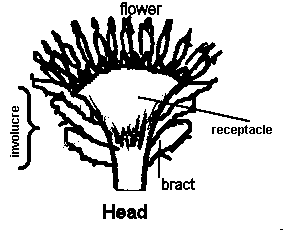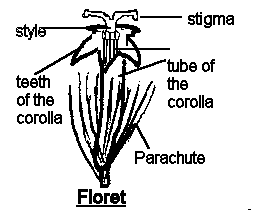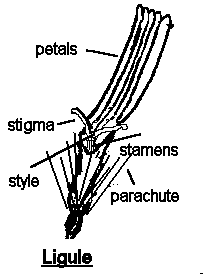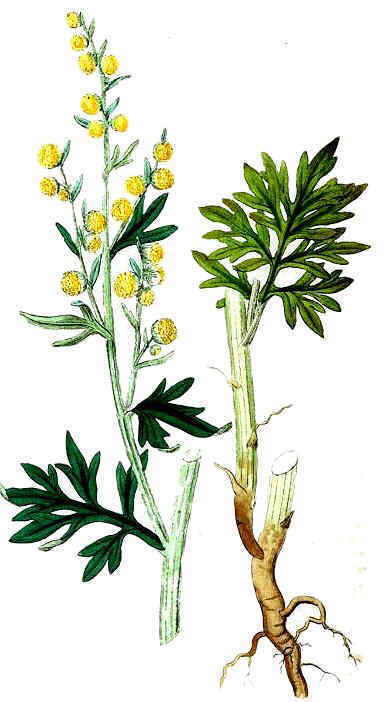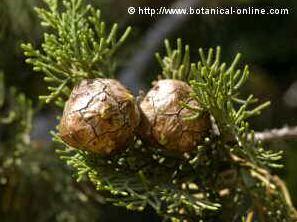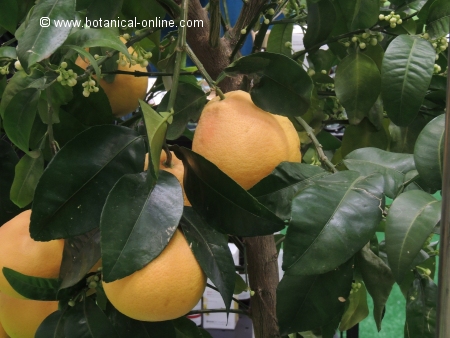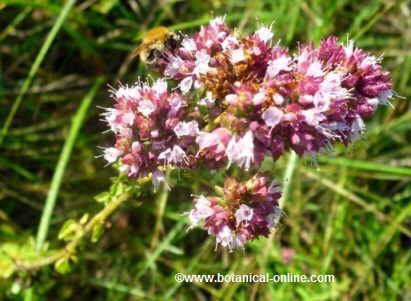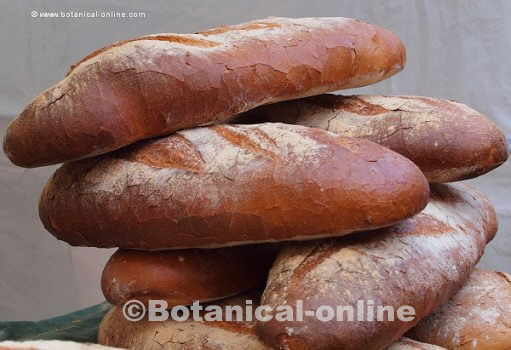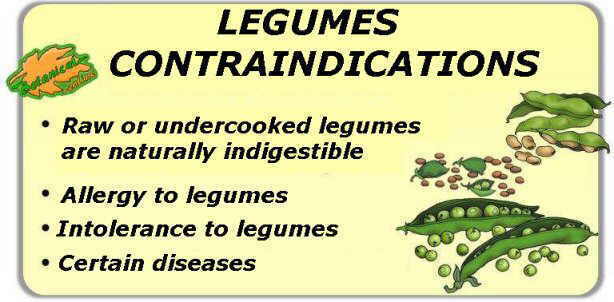Characteristics of daisy family
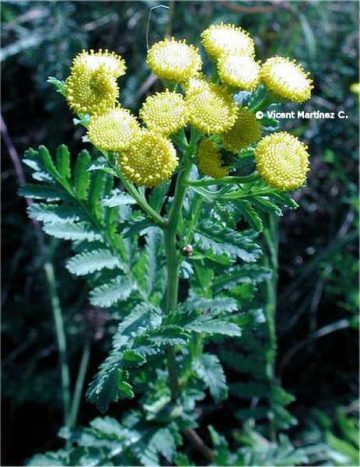
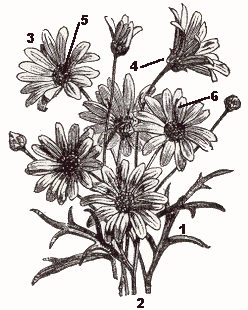
The daisy family – compositae – stands for about 2000 of plants scattered throughout the world, but mainly in temperate and subtropical regions.
Most of all, they are annual or vivacious herbs, although trees and bushes can also be found.
According to their floral structure (head) and their chemical composition it is considered as the most evolutionated family in the dicotyledonous
| Leaves (1): simple or compound. Alternate or whorled. | |
| Stems: (2) Generally herbaceous. | |
| Flowers: Gathered in heads, (3), similar to a single flower but being in fact an inflorescence. heads are formed by a base where single flower stand. It is called the receptacle. All around the heads there are the bracts, calyx-like, forming altogether the involucre, (4) | |
| |
Calyx: Transformed in a single ring of hairs or scales, parachute- like. Sometimes not present. | |
Corolla: With 5 united petals. It can be:
| |
Heads can be formed:
| |
| Stamens: 5 attached at the base of the corolla, united at the anthers like a tub,wherein style can be found. | |
| Ovary: Inferior | |
| Style: 1, with two stigmas. | |
| Fruit: Achenes | |
Genera
There are about 900 genera. The most important:
| ACHILLEA ADENOSTYLES AETHEORHRIZA AMBROSIA ANACYCLUS ANDRYALA ANTENNARIA ANTHEMIS APOSERIS ARCTIUM ARCTOTHECA ARNOSERIS ARTEMISIA ASTERISCUS ATRACTYLIS BACCHARIS BALSAMITA BELLIS BELLIUM BIDENS BOMBYCILAENA CARDUUS CARLINA CARPESIUM CATANANCHE CHAMAEMELUM CHAMOMILLA CHEIROLOPUS CHONDRILLA CICERBITA CICHORIUM CLADANTHUS CNICUS COLEOSTEPHUS CONYZA COTULA CREPIS CRUPINA CRYSANTHEMUM CYANOPSIS | DITTRICHIA DORONICUM ECHINOPS ECLIPTA ERIGERON EUPATORIUM EVAX FILAGINELLA FILAGO GALACTITES GALINSOGA GAMOCHAETA GLOSSOPAPPUS GNAPHALIUM GUIZOTIA GYMNOSTYLES HEDYPNOIS HELIANTHUS HELICHRYSUM HETERANTHEMIS HIERACIUM HISPIDELLA HOMOGYNE HYMENOSTEMMA HYOSERIS IFLOGA JASONIA JURINEA KOELPINIA LAPSANA LASIOPOGON LAUNANEA LEONTODON LEONTOPODIUM LEPIDOPHORUM LEUCANTHEMOPSIS LEUCANTHEMUM LEUZEA LEYSERA LOGFIA | MANTISALCA MICROPUS MYCELIS NEOLLETIA NOTOBASIS OMALOTHECA ONOPORDUM OTANTHUS OTOSPERMUM PALLENIS PETASITES PHAGNALON PHALACROCARPUM PICNOMON PICRIS PRENANTHES PROLONGOA PTILOSTEMON PULICARIA REICHARDIA RHAGADIOLUS ROTHMALERIA SAUSSUREA SCHKUHARIA SCOLYMUS SCORZONERA SERRATULA SOLIDAGO SOLIVA SONCHUS STAEHELINA TAGETES TOLPIS TRAGOPOGON TRYMNUS TUSSILAGO UROSPERMUM VOLUTARIA XANTHIUM XERANTHEMUM |
![]() More information on plants
More information on plants

